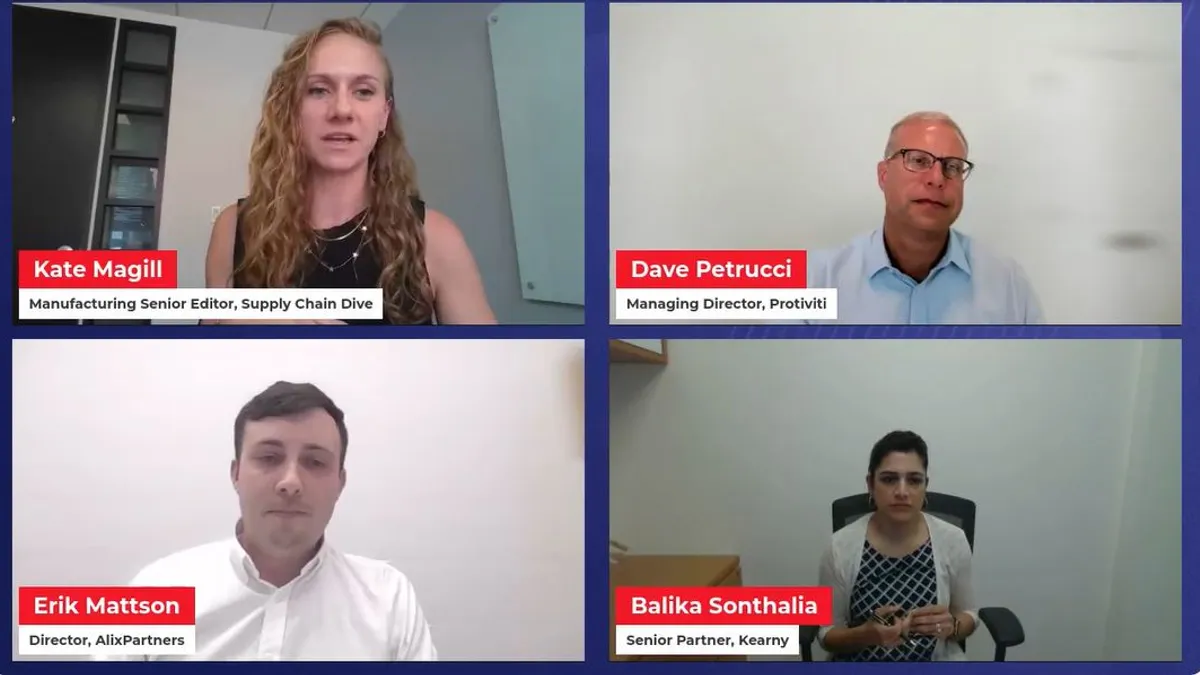Editor’s note: This story is part of a series highlighting takeaways from a July 11 event hosted by Supply Chain Dive, Transport Dive and Manufacturing Dive. Register here to watch the replay on demand.
As conversations surrounding nearshoring accelerate, readiness remains one of the biggest risks to global supply chains, Balika Sonthalia, senior partner at Kearney, said during Supply Chain Dive’s July 11 virtual event “Supply Chain Outlook: Trends and Risks To Watch in 2023.”
With ongoing complexities in Asia as a major driver, more companies are diverting their manufacturing operations away from China in favor of Mexico and other countries, Sonthalia noted. Despite these efforts to adjust production networks, she said the question of if companies are “truly ready to change their end-to-end supply chain” remains.
Shifting to a new supply base typically sparks discussion about how companies’ inbound lanes would change, but the conversation is missing the piece on how their supply chain partners are going to change, Sonthalia said.
“Are they ready to respond to this new supply chain that’s going to be set up?” Sonthalia asked.
While Sonthalia noted that progress is being made on the labor, technology and establishing manufacturing infrastructure side of reshoring, she said, “When you connect the dots, there are so many players which play a role to string things together.”
“Sometimes your weakest link happens to be the one that hurts you the most, and I feel like that’s not being talked about a lot right now,” Sonthalia added. This includes everything from modal changes to customer service.
Although companies are implementing nearshoring and other strategies to navigate supply chain risks, the second half of the year remains volatile and companies will need to know the cost of failure and solutions, Erik Mattson, director at Alix Partners, said during the panel.
“Knowing the cost of failure is critical because, well, as you anticipate how much am I willing to invest in a solution to understand your viable likely alternatives,” Mattson said. “And out of those alternatives, the best could be doing nothing at all. But that allows you to ensure that you are prepared to have options on the table in case disaster does strike.”














